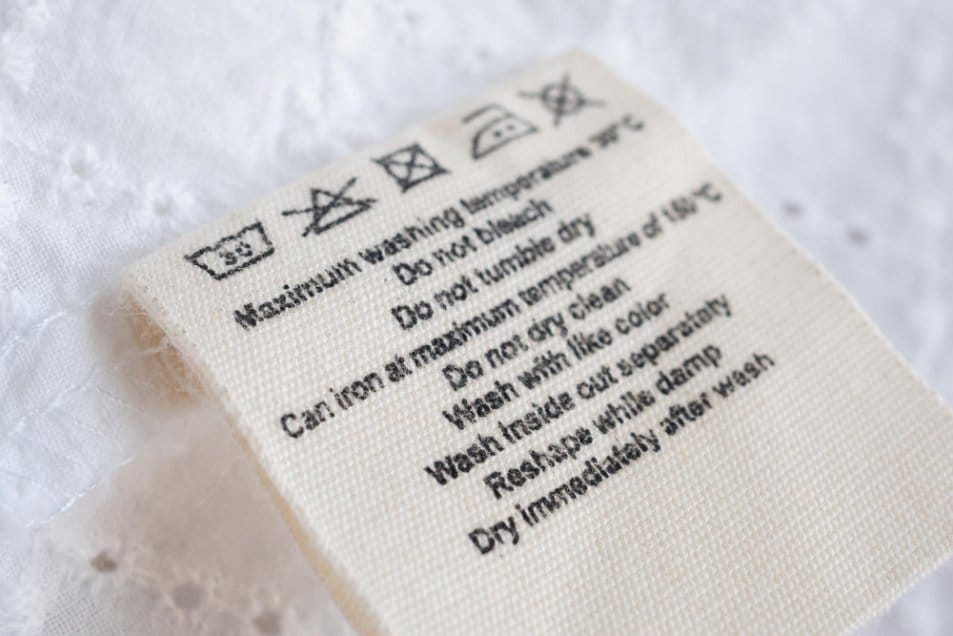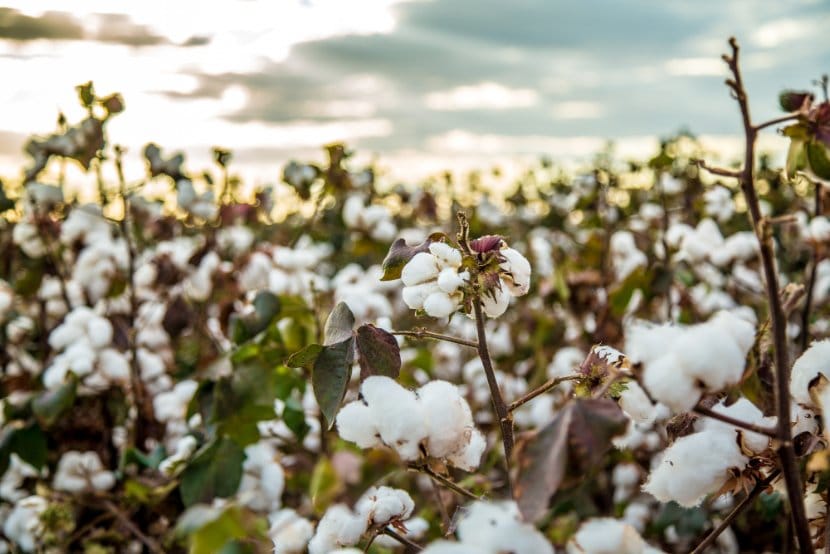Discover why this premium cotton variety transforms everyday clothing and bedding into long-lasting luxury.
When you reach for that incredibly soft t-shirt or slide into bed with sheets that feel like a cloud, there’s a good chance you’re experiencing Pima cotton. This premium fabric has earned its reputation in the textile world, but with prices often double that of regular cotton, you might wonder what makes it worth the investment.
Here’s the reality: only 3% of cotton grown worldwide qualifies as luxury grade, and Pima cotton sits at the top of that exclusive group. With fibers nearly 50% longer than standard cotton, this material delivers exceptional softness and durability that outlasts ordinary fabrics by years.
Table of Contents
What Makes Pima Cotton Special
Understanding Extra-Long Staple Cotton
Pima cotton belongs to the botanical species Gossypium barbadense, which produces fibers measuring 1⅜ inches or longer. Compare that to regular cotton fibers at just ¾ inch, and you’ll understand why the difference matters. These extended strands create smoother surfaces with fewer protruding ends, resulting in fabric that feels silky against your skin.
Pima Cotton by the Numbers
The longer fibers interlock more securely during the weaving process, creating tighter fabric that resists pilling and maintains its shape through countless washes. This natural reinforcement explains why your Pima cotton items can last 5 years or more with proper care, while standard cotton alternatives might need replacing after a single year.
Is Pima Cotton Better Than 100% Cotton?
Yes, Pima cotton outperforms standard 100% cotton in several measurable ways. While both are pure cotton, Pima’s extra-long fibers give it superior strength (4.28 N/tex compared to 3.11 N/tex), better softness, and longer lifespan. Think of it this way: all Pima is 100% cotton, but not all 100% cotton is Pima. The difference lies in the fiber length and quality, not the cotton content.
Origins and Evolution of Pima Cotton
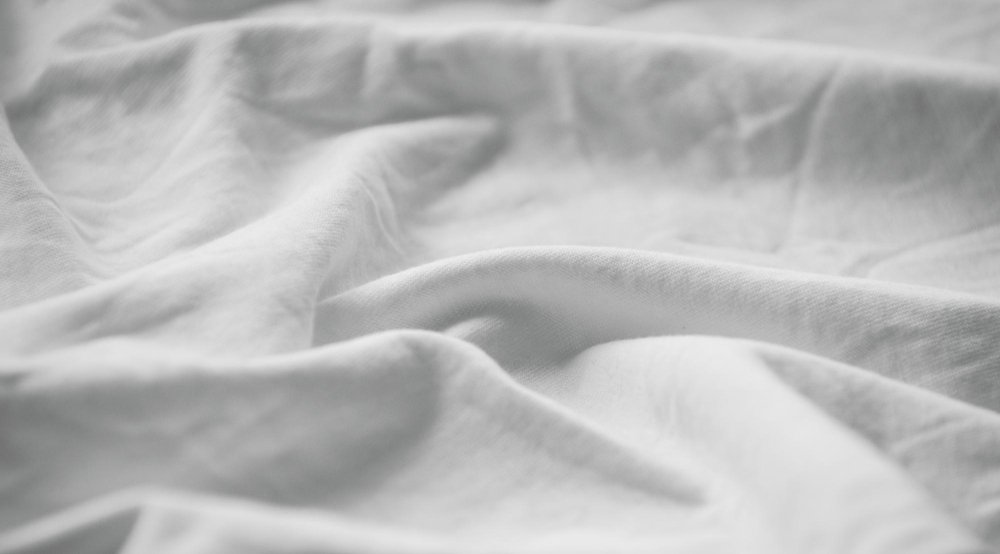
Ancient Roots in Peru
The story of Pima cotton begins in Peru’s Chicama Valley around 4200 BCE, where archaeologists discovered woven fragments that show indigenous communities had mastered cotton cultivation millennia before European contact. These early farmers developed sophisticated growing and spinning techniques that still influence modern production methods.
American Innovation and the Pima Connection
Fast forward to the 1940s, when USDA researchers partnered with Peruvian agronomists to adapt South American plant varieties to arid American climates. The breakthrough strain was named to honor the agricultural expertise of Arizona’s Pima Nation, whose knowledge proved vital in developing drought-resistant crops suitable for the American Southwest.
Today, sustainable cotton farming continues this legacy of innovation, with California, Arizona, New Mexico, and Texas producing the bulk of American Pima cotton. Peru remains a major producer, with hand-harvested cotton often considered slightly superior in quality to machine-harvested American varieties.
Where Is Pima Cotton Made?
Pima cotton grows in specific regions with ideal conditions: the southwestern United States (primarily California’s San Joaquin Valley and Arizona), Peru’s coastal valleys, and smaller operations in Australia. The growing regions need warm days, cool nights, and controlled water access. Less than 10 locations worldwide provide the perfect combination of soil quality and climate for premium Pima production.
Key Benefits and Features
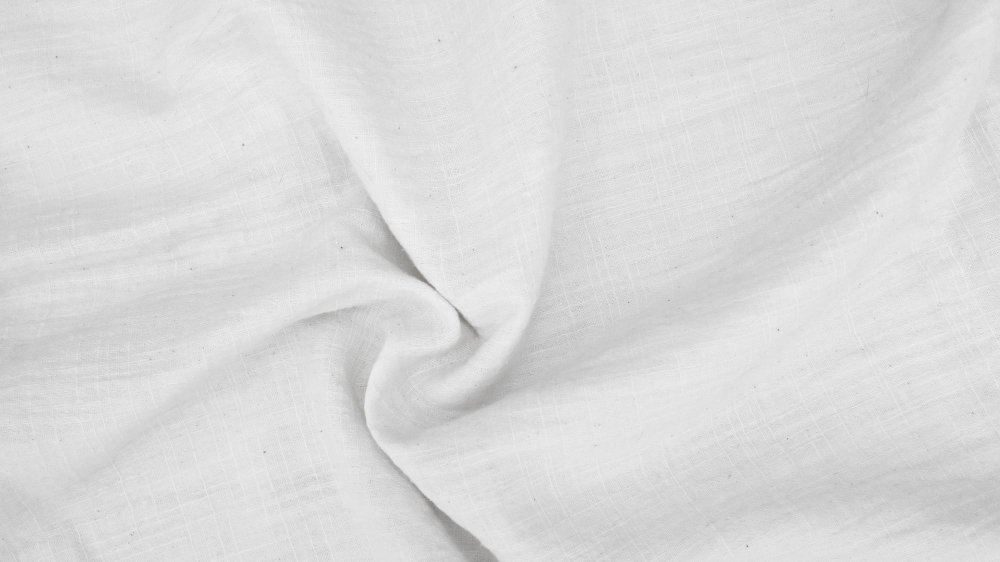
Unmatched Softness and Comfort
The extended fiber length creates surfaces comparable to high-thread-count silk. With 42% fewer loose fibers than shorter cotton varieties, Pima eliminates the scratchiness common in standard weaves. This smoothness actually intensifies with washing as the fibers open and soften, developing that lived-in feel without compromising structural integrity.
Is Pima Cotton Good for Sensitive Skin?
Absolutely. Pima cotton ranks among the best fabrics for sensitive skin because its smooth, long fibers create less friction against skin. The tighter weave means fewer irritating loose threads, and the fabric’s natural breathability helps prevent moisture buildup that can trigger skin reactions. Many dermatologists recommend Pima cotton for people with eczema or contact dermatitis.
Exceptional Durability
Stress tests demonstrate Pima’s superior resilience with tensile strength 38% higher than conventional cotton. This structural advantage extends product lifespans significantly beyond fast-fashion standards. Your Pima cotton jersey t-shirts and sheets can easily survive 300+ wash cycles while maintaining their original texture and appearance.
| Property | Pima Cotton | Regular Cotton |
|---|---|---|
| Fiber Length | 1⅜ inches | ¾ inch |
| Tensile Strength | 4.28 N/tex | 3.11 N/tex |
| Expected Wash Cycles | 300+ | 50-100 |
| Pilling Resistance | Class 5 (Excellent) | Class 2-3 (Fair) |
| Color Retention | 75+ washes | 20-30 washes |
| Shrinkage | 3-5% | 5-8% |
Is Pima Cotton Good for Summer?
Yes, Pima cotton excels in hot weather. The long fibers create a looser weave that allows better air circulation than standard cotton. This enhanced breathability helps regulate body temperature and wicks moisture away from your skin. Combined with its natural absorbency (Pima cotton can absorb up to 25% of its weight in water before feeling damp), it keeps you comfortable even on the hottest days.
Does Pima Cotton Absorb Sweat?
Pima cotton is highly absorbent and naturally wicks moisture away from your body. While not technically “sweat-wicking” like synthetic performance fabrics, Pima absorbs perspiration quickly and allows it to evaporate through the fabric. This makes it excellent for everyday wear, though synthetic blends might be better for intense workouts where rapid moisture transfer is critical.
Color Retention and Appearance
The lustrous fibers absorb dyes deeply, maintaining vibrancy through 75+ washes. This allows manufacturers to use eco-friendly coloring processes while ensuring lasting visual appeal. Unlike regular cotton that fades within months, Pima garments maintain their rich colors for years.
Is Pima Cotton Shiny?
Pima cotton has a natural subtle luster, especially when woven in sateen weaves. It’s not shiny like satin or silk, but it does have a gentle sheen that gives it a more luxurious appearance than matte regular cotton. The smoothness of the long fibers reflects light differently than shorter cotton fibers, creating that characteristic soft glow.
How to Identify Real Pima Cotton
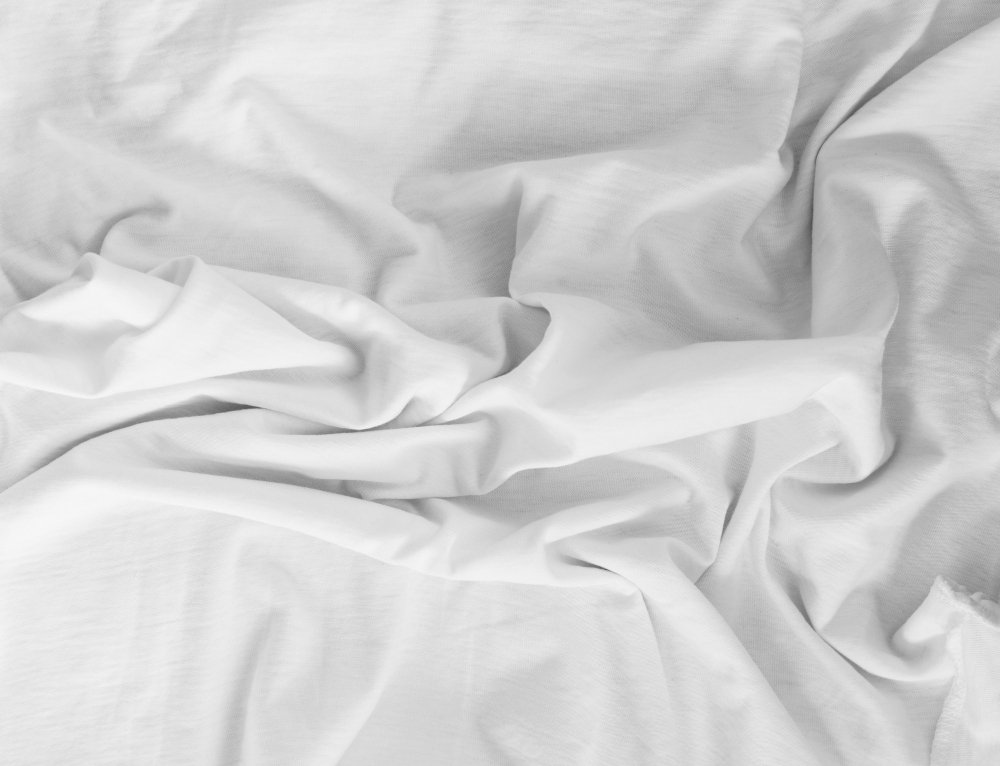
The Authentication Crisis
With Pima cotton commanding premium prices, counterfeit and mislabeled products flood the market. Unscrupulous manufacturers blend small amounts of Pima with regular cotton or use the label entirely fraudulently. This practice cheats consumers while undermining legitimate producers who invest in quality.
7 Red Flags That Signal Fake Pima Cotton
- Suspiciously low prices: Genuine Pima t-shirts cost $30-80, sheets $100-300. Anything significantly cheaper likely isn’t pure Pima.
- Vague labeling: Real Pima products specify “100% Pima Cotton” or “100% Peruvian Pima Cotton,” not just “Pima blend” or “Pima-style.”
- Country of origin concerns: While Pima can be grown in China or India, these regions often produce lower quality. Peru and the US Southwest grow the best Pima.
- Rough texture: Authentic Pima feels extraordinarily smooth, even on first touch. If it feels scratchy or has visible loose threads, it’s likely fake.
- Missing certifications: Look for Supima logos, GOTS certification, or other third-party verification. Their absence doesn’t guarantee fake products, but their presence confirms authenticity.
- Rapid pilling: Real Pima resists pilling for years. If your new item pills after a few washes, it’s not genuine Pima.
- Quick fading: Authentic Pima maintains color for 75+ washes. Fading within 10-20 washes indicates regular cotton.
How Can You Identify Real Pima Cotton?
Beyond price and labeling, use your senses to verify authenticity. Run your fingers across the fabric. It should glide smoothly without catching or snagging. Hold it up to light and examine the weave closely. Real Pima shows an even, tight weave with minimal loose fibers. The fabric should have body and structure while remaining soft and pliable.
Check for certifications like the Supima trademark (for American Pima) or GOTS certification (for organic varieties). These guarantees provide the strongest protection against fakes. Country of origin matters too. Peru and the US Southwest consistently produce the highest quality Pima cotton.
Certification and Verification Technologies
The Supima trademark provides the gold standard for American Pima cotton verification. This certification guarantees 100% US-grown extra-long staple cotton with fibers measuring at least 1⅜ inches, grown exclusively in Arizona, California, New Mexico, and Texas. Only 1% of world cotton production qualifies as Supima.
New DNA traceability technology launched in 2023-2024 offers even stronger authentication. Companies like PimaCott use molecular tagging at every supply chain step, while Supima uses Oritain forensic sciences for origin verification. These technologies directly combat the 89% fake rate problem by providing unchangeable proof of authenticity.
Blockchain-based traceability systems provide another layer of verification. The U.S. Cotton Trust Protocol uses blockchain-based PCMS (Protocol Cotton Management System) to track cotton from field to fabric. Each batch receives Protocol Consumption Units (PCCUs), which are digital tokens minted for each kilogram of verified cotton fiber. This creates a permanent, unchangeable record that proves exactly where your cotton came from.
Pima vs Egyptian vs Supima Cotton
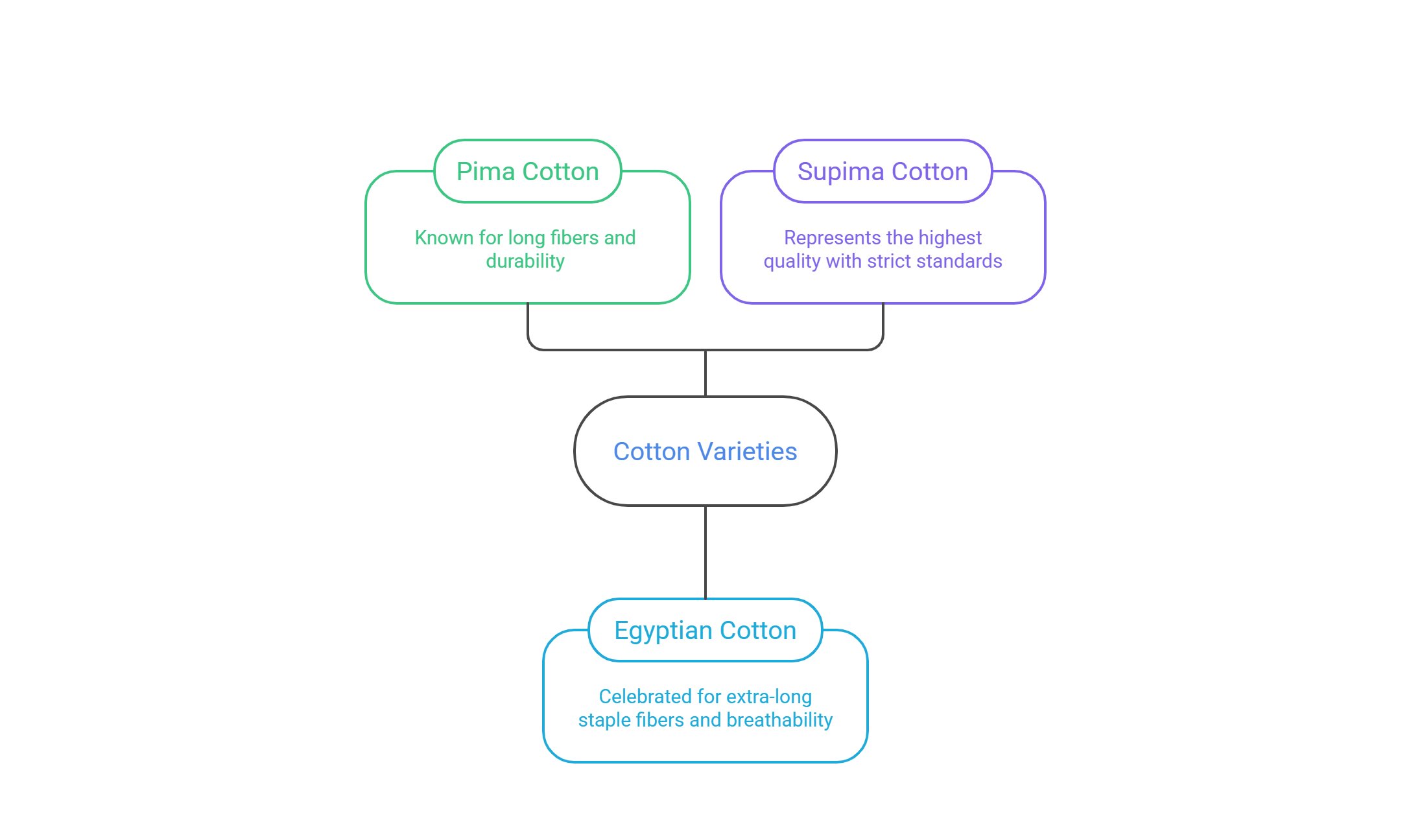
Understanding the Relationship
These premium cottons often create confusion, but the distinctions are straightforward. Pima and Egyptian cotton are the same species (Gossypium barbadense) grown in different regions. Supima is simply a trademarked certification for American-grown Pima cotton, guaranteeing specific quality standards and traceability.
Which Is Better: Egyptian or Pima Cotton?
When comparing authentic, high-quality versions, Egyptian and Pima cotton perform nearly identically. Both share the same botanical species with similar fiber lengths (1.4-2 inches). The main differences come from growing conditions and harvesting methods rather than inherent fiber properties. Egyptian cotton from the Nile Delta benefits from that region’s unique soil and climate, while Pima from Peru or Arizona thrives in their respective terroirs.
The bigger issue: Egyptian cotton faces the same authenticity crisis as Pima, with lax labeling regulations allowing blends to use the name. Supima certification provides more reliable quality assurance than generic “Egyptian cotton” labels. Read more about Egyptian cotton quality on our dedicated guide.
| Type | Growing Region | Certification | Quality Assurance |
|---|---|---|---|
| Pima Cotton | Peru, US Southwest, Australia | Varies by brand | Check for third-party verification |
| Egyptian Cotton | Egypt (Nile Delta) | Often unverified | Authenticity difficult to confirm |
| Supima Cotton | Arizona, California, New Mexico, Texas | Supima® trademark | Guaranteed 100% American ELS cotton |
| Regular Cotton | Worldwide | None | Standard quality varies widely |
Which Is Better: Pima Cotton or Supima Cotton?
This comparison is misleading because Supima IS Pima cotton, just certified American-grown Pima. If you’re choosing between a generic “Pima” product and a Supima-certified one, choose Supima every time. The certification guarantees authenticity and quality standards, eliminating guesswork. Non-certified Pima might be excellent (especially hand-picked Peruvian Pima), but without verification, you’re taking a risk.
Regional Quality Differences
Peruvian Pima, especially hand-harvested varieties, often edges out machine-harvested American Pima in quality. Hand-picking preserves fiber integrity at 98% full length, while mechanical harvesting can snap strands and introduce impurities. However, American Supima provides unmatched traceability and consistent quality through strict regulation.
Chinese and Indian Pima production has grown in recent years, but quality typically ranks a couple notches lower than Peru or US Southwest production. The difference stems from growing conditions, harvesting methods, and quality control standards rather than the cotton variety itself.
Is Turkish Cotton Better Than Pima Cotton?
Turkish cotton and Pima cotton serve different purposes. Turkish cotton, grown primarily for towels and bathrobes, excels at absorbency and creating plush, voluminous fabrics. Pima cotton prioritizes smoothness, softness, and durability in apparel and bedding. For towels, Turkish cotton might be preferable. For t-shirts and sheets, Pima wins. They’re optimized for different applications rather than one being universally better.
Proper Care and Maintenance
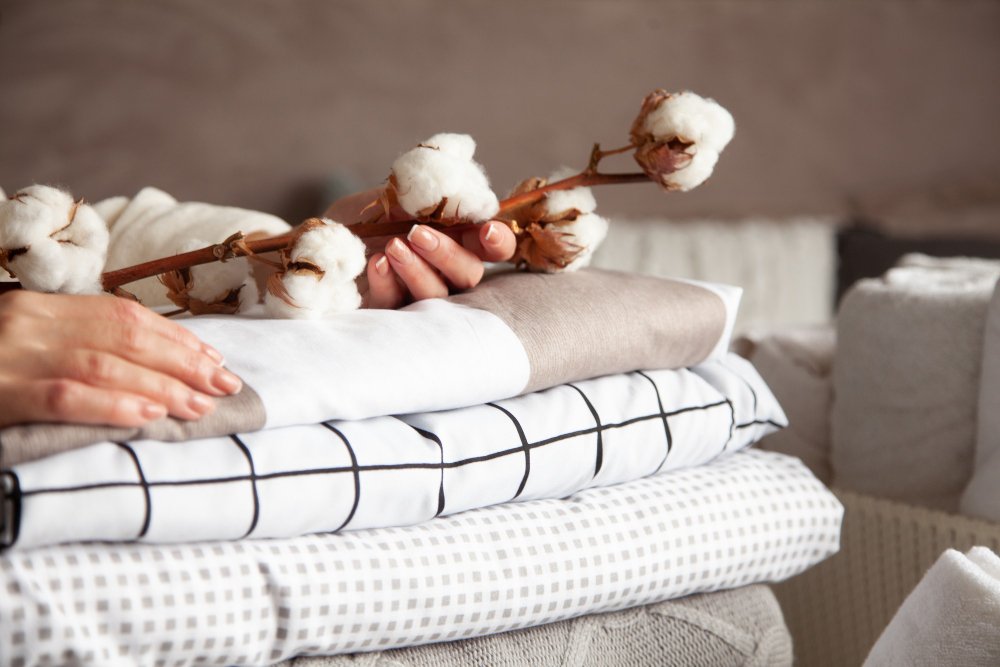
How to Wash 100% Pima Cotton
Proper care extends your Pima cotton’s lifespan from years to decades. Follow these guidelines for optimal cotton care:
First Wash Protocol
The first wash matters more than you might think. New Pima cotton items contain finishing agents that make them feel stiff or crisp. This first wash removes these agents and allows fibers to open fully.
First Wash Steps:
- Wash separately or with similar colors to prevent dye transfer
- Use cold or warm water (never hot on the first wash)
- Add half the normal detergent amount
- Skip fabric softener entirely (Pima doesn’t need it)
- Air dry or use low heat
- Expect 3-5% shrinkage (this is normal and stops after the first wash)
Will 100% Pima Cotton Shrink?
Yes, pure Pima cotton will shrink 3-5% in the first wash, with most shrinkage happening immediately. This is less than regular cotton’s 5-8% shrinkage. After the initial wash, properly cared-for Pima cotton experiences minimal additional shrinkage. Always wash in cold or warm water and avoid high-heat drying to minimize any ongoing shrinkage.
How Much Does 100% Pima Cotton Shrink?
Expect 3-5% shrinkage on the first wash for 100% Pima cotton. For a standard t-shirt, this translates to about half an inch in length. Sheets might shrink 2-4% total. To account for this, consider buying items slightly larger or following the pre-washing instructions. The good news: this shrinkage stabilizes after the first wash cycle, unlike regular cotton which can continue shrinking over time.
Ongoing Care
| Item Type | Washing | Drying | Special Notes |
|---|---|---|---|
| T-Shirts | Cold water, gentle cycle | Hang dry or low heat | Turn inside out to protect print/color |
| Sheets | Warm water, normal cycle | Low heat tumble dry | Remove promptly to avoid wrinkles |
| Baby Clothes | Warm water (30°C), gentle cycle | Air dry flat | Use hypoallergenic detergent |
| Dress Shirts | Cold water, delicate cycle | Hang dry immediately | Iron while slightly damp if needed |
Can I Bleach Pima Cotton?
Use bleach on white Pima cotton sparingly. Oxygen-based bleach (like OxiClean) is safer than chlorine bleach and less likely to weaken fibers. If you must use chlorine bleach, dilute it heavily and limit frequency to once every 10-15 washes. Never bleach colored Pima cotton as it will strip the dye and damage fibers. For most stains, cold water and enzyme-based stain removers work better without the fiber damage.
Troubleshooting Common Issues
My Pima cotton feels rough: If your Pima cotton develops a rough texture, it’s likely either fake or you’ve been washing it in hot water with harsh detergents. Try soaking it in cool water with a cup of white vinegar for 30 minutes, then wash in cold water with gentle detergent. If it doesn’t improve, the item probably isn’t genuine Pima.
Unexpected shrinkage: If your Pima cotton shrinks more than 3-5%, check your water temperature and dryer heat. High temperatures cause excessive shrinkage. While you can’t fully reverse shrinkage, soaking the item in lukewarm water with hair conditioner for 15 minutes, then gently stretching while damp can help recover some size.
Smart Buying Guide

Is Pima Cotton Expensive?
Yes, Pima cotton costs significantly more than regular cotton, typically 50-150% more. But here’s what that premium buys you: a t-shirt that lasts 5 years instead of 1, sheets that remain soft through hundreds of washes instead of becoming scratchy after a season, and fabric that maintains its appearance while regular cotton fades and pills.
Price Ranges and Value Assessment
| Product | Regular Cotton Price | Pima Cotton Price | Expected Lifespan |
|---|---|---|---|
| Basic T-Shirt | $10-20 | $30-80 | 1 year vs 5+ years |
| Sheet Set (Queen) | $40-80 | $100-300 | 2 years vs 7+ years |
| Dress Shirt | $25-50 | $60-150 | 1-2 years vs 5+ years |
| Baby Clothing | $8-15 | $20-45 | Can pass down to siblings |
When Pima Is Worth It (And When It’s Not)
Best investments for Pima cotton:
- Weekly-wear basics like t-shirts and poplin dress shirts
- Bedding that gets nightly use
- Baby clothes that need to survive multiple children
- Items you want to last 5+ years
- Clothing for people with sensitive skin
Skip Pima cotton for:
- Workout gear needing moisture-wicking synthetics
- Trendy fashion pieces you’ll only wear one season
- Items that rarely get washed (like decorative pillows)
- Projects where durability doesn’t matter
Certification Checklist for Buyers
What to Look For:
- Supima® logo: Guarantees 100% American-grown Pima cotton
- GOTS certification: Verifies organic cotton with 95%+ organic fibers
- OEKO-TEX Standard 100: Tests for harmful chemicals
- Country of origin: Peru and US Southwest produce the highest quality
- Specific labeling: Must say “100% Pima Cotton,” not “Pima blend”
- Thread count (for sheets): 200-400 is optimal for Pima; higher isn’t always better
What’s a Good Thread Count for Pima Cotton Sheets?
For Pima cotton sheets, 200-400 thread count represents the sweet spot. Unlike regular cotton where higher thread counts compensate for shorter fibers, Pima’s long fibers don’t need excessive thread counts to feel luxurious. A 300 thread count Pima sheet often feels softer than a 600 thread count regular cotton sheet. Manufacturers who advertise thread counts above 400 for Pima often use marketing tricks like counting multi-ply yarns multiple times.
Is 300 Thread Count Pima Cotton Good?
Yes, 300 thread count is excellent for Pima cotton. This count provides the ideal balance of softness, breathability, and durability. The long fibers create a smooth surface without needing the tight weave that higher thread counts require. Many luxury hotels use 300-350 thread count Pima sheets specifically because they combine comfort with practical durability.
Sustainability and Environmental Impact
Eco-Friendly Growing Practices
Modern Pima cotton farming has made significant environmental strides. Water-saving irrigation systems reduce usage by 33% compared to conventional methods. Many farms now use organic compost instead of synthetic fertilizers, enriching soil without harmful runoff. Crop rotation strategies prevent land depletion while allowing fields to regenerate naturally.
Integrated pest management cuts pesticide applications by 45% through natural predator introduction. This approach protects farmer health while maintaining crop yields. Fewer chemicals entering local watersheds supports aquatic life and provides cleaner drinking water sources.
Regenerative Organic Certified Pima
The newest advancement in sustainable Pima production, Regenerative Organic Certified (ROC) cotton, goes beyond organic standards. ROC farms actively improve soil health, increase biodiversity, and support farming communities. In Peru’s San Martín region, ROC Pima cultivation helps farmers transition from coca production, providing economic alternatives in conflict-affected regions.
These programs have planted over 150,000 mahogany and eucalyptus saplings alongside cotton fields, creating measurable reforestation progress and biodiversity gains. The socio-economic narrative of Peruvian regenerative Pima combines sustainability with human interest. Farmers escaping drug trade through premium cotton cultivation create a compelling story that goes beyond dry sustainability claims.
Carbon Footprint and Longevity
While Pima cotton costs more upfront, its durability significantly reduces environmental impact over time. One Pima t-shirt lasting 5 years produces less waste and requires less energy than five regular cotton shirts. The extended lifespan means fewer manufacturing cycles, less water consumption, and reduced carbon emissions from production and shipping.
According to Cotton Incorporated, the leading research organization for U.S. cotton, sustainable practices in cotton cultivation continue to improve annually, with American cotton growers reducing environmental impact through precision agriculture and responsible resource management.
Cutting-Edge Innovations in Pima Cotton
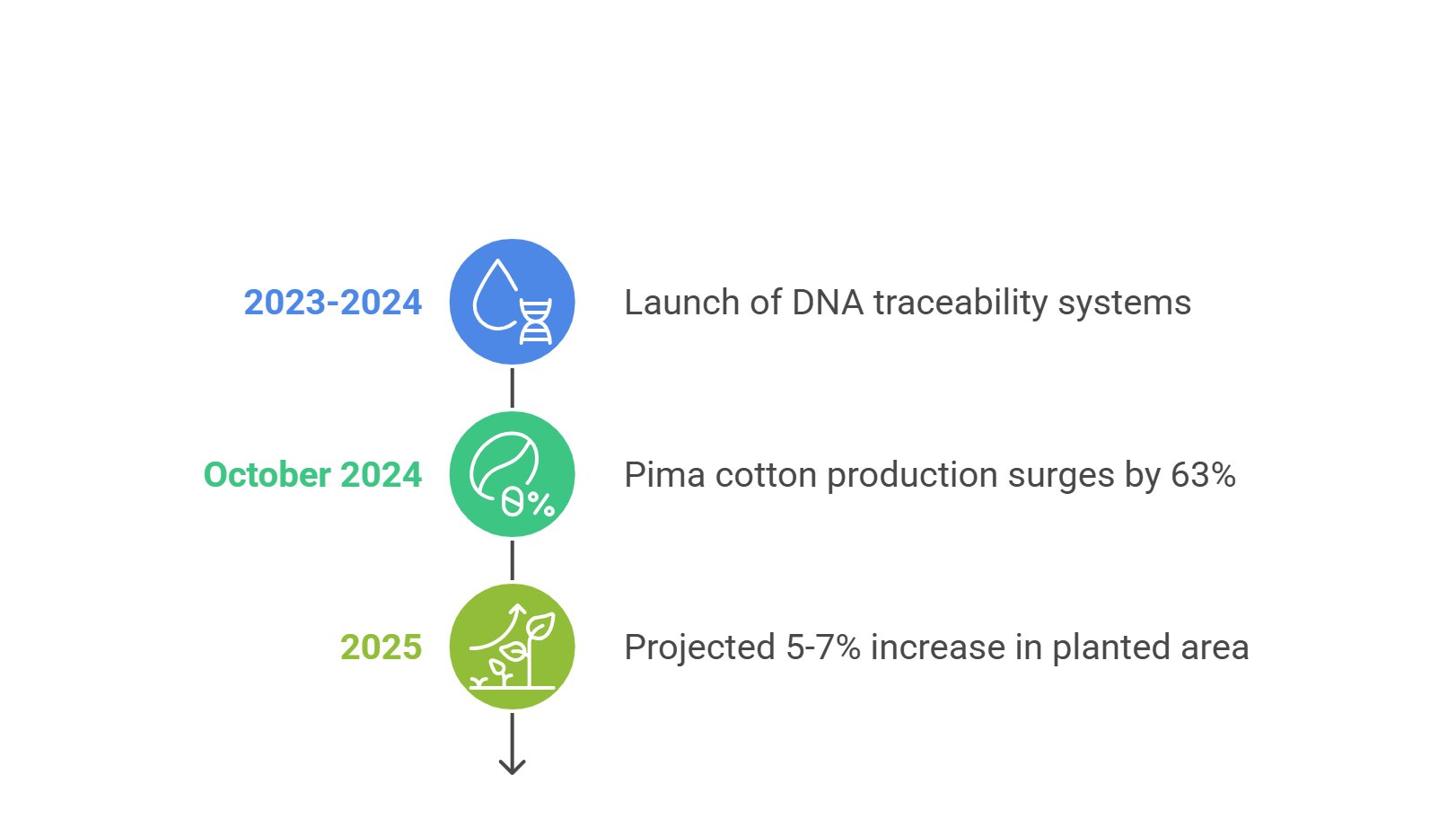
DNA Traceability and Blockchain Verification
The textile industry’s authentication crisis has a technological solution. DNA traceability systems launched in 2023-2024 provide unchangeable proof of cotton origin. PimaCott offers molecular tagging at every supply chain step, creating a genetic fingerprint that can’t be faked.
Here’s how it works: scientists apply DNA markers to cotton at the gin (where fibers are separated from seeds). These markers remain detectable through spinning, dyeing, weaving, and garment construction. Testing a finished t-shirt reveals exactly which farm grew its cotton.
Blockchain technology complements DNA verification by creating permanent digital records. The U.S. Cotton Trust Protocol uses blockchain-based systems to mint Protocol Consumption Units (PCCUs) as digital tokens for each kilogram of verified cotton. This creates a “digital twin” of physical cotton, with a permanent record proving this specific garment came from that specific farm.
For consumers, this means scanning a QR code on your Pima cotton purchase to see its complete journey from field to finished product. The Global Organic Textile Standard (GOTS) incorporates these technologies into certification requirements, ensuring transparency throughout the supply chain.
Smart Textiles Using Pima Cotton
Pima cotton is entering the high-tech world. Washington State University developed single-strand fiber combining cotton flexibility with electrical conductivity using polyaniline polymer. This breakthrough enables sensor patches for firefighters detecting hazardous exposures, health monitoring apparel, and fitness shirts beyond current wearables.
MIT’s FibeRobo project created temperature-responsive cotton fiber that shape-shifts when heated, enabling adaptive clothing. The fabric adjusts fit based on body temperature and environmental conditions. Pima’s extra-long staple and strength make it ideal for these conductive fibers and responsive textiles.
Market Trends and Production Increases
Pima cotton production surged 63% in 2024, reaching 516,000 bales according to USDA October 2024 data. Export growth shows dramatic weekly increases, with India emerging as the leading importer at 6,700-7,400 running bales weekly, followed by Vietnam and China.
The 2025 forecast projects 5-7% increase in planted area due to improved water availability in California’s San Joaquin Valley. Climate adaptation investments become critical, with CRISPR gene editing developing heat and drought-resistant Pima varieties. Water conservation breakthroughs show organic Pima cultivation saves up to 91% of water versus conventional cotton.
Frequently Asked Questions
Is Pima Cotton Luxury?
Yes, Pima cotton qualifies as luxury due to its exceptional quality, softness, and durability. Representing only 3-7% of global cotton production, its rarity and superior performance justify premium pricing. High-end fashion brands and luxury hotels choose Pima specifically for its combination of comfort and longevity that regular cotton cannot match.
How Rare Is Pima Cotton?
Pima cotton is quite rare, accounting for only 7% of global cotton production and less than 1% when you count only Supima-certified American Pima. The combination of specific growing conditions (warm days, cool nights, controlled water access), limited suitable regions (primarily Peru and US Southwest), and longer growing cycles makes it significantly scarcer than regular cotton.
Is Pima Cotton Good for Babies?
Pima cotton is excellent for babies. The smooth, long fibers minimize skin irritation, while the tight weave reduces loose threads that could pose choking hazards. Its natural breathability helps regulate baby’s temperature, and the durability means items can be passed down to siblings. Look for GOTS-certified organic Pima cotton for baby items to ensure no harmful chemicals were used in processing.
Is Pima Cotton Good for Pajamas?
Pima cotton makes ideal pajamas. The fabric’s breathability prevents overheating during sleep, while its softness provides comfort without irritation. The moisture-wicking properties keep you dry if you perspire at night. Many people find Pima pajamas get softer with each wash, creating that perfect “broken-in” feel that makes them hard to give up.
Is Pima Cotton Hot to Sleep On?
No, Pima cotton isn’t hot to sleep on. Despite its luxurious softness, Pima cotton is highly breathable and actually helps keep you cool. The long fibers create better air circulation than regular cotton, allowing heat to escape rather than trap against your body. Combined with its moisture-wicking properties, Pima cotton works well for hot sleepers.
Does Pima Cotton Drape Well?
Yes, Pima cotton drapes beautifully. The long, smooth fibers create fabric that flows elegantly without stiffness. This drape quality makes it popular for dresses, skirts, and flowing garments. The fabric has body and structure while remaining fluid and graceful, allowing designers to create pieces with beautiful movement and silhouettes.
Is Pima Cotton Stretchy?
Pure Pima cotton has minimal stretch naturally. However, it’s often blended with small amounts of elastane or spandex (typically 2-5%) to create comfortable stretch fabrics for fitted garments. When you see “95% Pima Cotton, 5% Spandex,” the Pima provides softness and durability while the spandex adds stretch and shape retention. Pure Pima without added stretch fibers offers slight give but returns to its original shape.
Are Bamboo Sheets Better Than Pima Cotton?
Bamboo and Pima cotton serve different preferences. Bamboo sheets feel silkier and cooler, making them ideal for hot sleepers. Pima cotton provides a classic, crisp cotton feel with better durability and easier care. Bamboo requires careful washing to prevent damage, while Pima cotton is more forgiving. For pure softness and cooling, bamboo wins. For durability and low-maintenance luxury, Pima cotton takes the lead. Neither is objectively better; your choice depends on priorities.
What Is Better Than Supima Cotton?
Very few cottons surpass Supima in quality. Sea Island cotton, grown only in the Caribbean, has slightly longer fibers but costs significantly more and faces extreme scarcity. Some ultra-premium Egyptian cottons from specific Nile Delta regions match Supima’s quality. Hand-picked Peruvian organic Pima sometimes edges out machine-harvested Supima. For most practical purposes, Supima represents the peak of readily available, verified cotton quality.
What Is the Best Cotton Fabric in the World?
Sea Island cotton holds the technical title for world’s finest cotton, with fibers reaching 2+ inches. However, its extreme rarity and astronomical cost make it impractical for most uses. Among readily available options, Supima-certified American Pima and hand-picked Peruvian organic Pima tie for the best combination of quality, verification, and accessibility. Egyptian cotton from authentic Nile Delta sources equals these when properly certified, but authentication remains challenging.
Why Is Pima Cotton So Expensive?
Several factors drive Pima’s premium pricing. Only specific regions worldwide provide ideal growing conditions. The longer growing season (compared to regular cotton) means farmers can produce fewer annual crops. Hand-harvesting (especially in Peru) increases labor costs but preserves fiber quality. Processing extra-long fibers requires specialized equipment. Most critically, demand exceeds supply. With Pima representing just 7% of global cotton production, scarcity naturally increases price.
Quick Cost Breakdown
Pima cotton costs 50-150% more than regular cotton but lasts 3-5 times longer. A $60 Pima t-shirt worn 500 times costs $0.12 per wear. Five $15 regular cotton shirts worn 100 times each cost $0.15 per wear. The math favors Pima for frequently worn items.
Is Pima Cotton Good to Sleep In?
Yes, Pima cotton is excellent for sleepwear and bedding. The breathable fibers regulate temperature throughout the night, preventing overheating. The smooth texture won’t irritate skin during sleep, and the moisture-wicking properties keep you comfortable. Many people report better sleep quality after switching to Pima cotton sheets and pajamas.
Is Pima Cotton Sweat Wicking?
While not technically “sweat-wicking” like synthetic performance fabrics designed for athletic wear, Pima cotton naturally absorbs and wicks moisture. It can absorb up to 25% of its weight in water before feeling damp, then allows moisture to evaporate through the fabric. For everyday activities and moderate exercise, Pima performs excellently. For intense workouts, synthetic moisture-wicking fabrics might be more suitable.
Conclusion
Pima cotton represents more than just premium pricing. It’s an investment in quality, comfort, and sustainability that pays dividends through years of use. The 1⅜ inch fibers creating that signature softness aren’t marketing hype. They’re measurable differences that translate to real-world benefits.
Your purchasing decisions should balance immediate cost against long-term value. That $80 Pima t-shirt might make you hesitate at checkout, but when it’s still soft and vibrant after 5 years while cheaper alternatives have pilled and faded, the value becomes clear. The same calculation applies to bedding. Investing in quality Pima sheets that last 7+ years beats replacing rough, uncomfortable regular cotton sheets every 2 years.
Key Takeaways
- Verify authenticity: With 89% of “Pima” products being fake or blended, always look for Supima certification, check country of origin, and verify the price matches genuine Pima ranges ($30-80 for t-shirts, $100-300 for sheets).
- Proper care extends lifespan: Wash in cold or warm water, avoid high heat drying, skip fabric softener, and expect 3-5% shrinkage on first wash. Follow these guidelines and your Pima items will easily survive 300+ wash cycles.
- Thread count misconceptions: For Pima cotton sheets, 200-400 thread count is ideal. Higher numbers don’t improve quality and often indicate marketing manipulation rather than superior fabric.
- Strategic purchases matter: Invest in Pima for frequently worn items, bedding, and pieces you want to last years. Skip it for workout gear, trendy fast-fashion pieces, and applications where synthetics perform better.
- Sustainability advantage: One durable Pima item creates less environmental impact than multiple replacement regular cotton purchases. The longer lifespan reduces waste, manufacturing emissions, and resource consumption.
- Know your alternatives: Supima is certified American Pima. Egyptian cotton shares the same species but lacks reliable verification. Turkish cotton excels for towels, not clothing. Bamboo offers different benefits entirely.
- New technologies provide assurance: DNA traceability and blockchain verification combat counterfeiting. Look for brands using these technologies to guarantee authenticity.
Final Recommendations
Start your Pima cotton journey with items you use daily. A set of Pima sheets or a few basic t-shirts let you experience the quality difference without massive investment. Once you feel how the fabric improves with washing rather than deteriorating, you’ll understand why people who switch to Pima rarely go back to regular cotton.
Don’t fall for “too good to be true” pricing. If you find Pima cotton significantly cheaper than market rates, it’s almost certainly fake or heavily blended. Stick with verified brands, check certifications, and remember that quality pays for itself through longevity.
Consider the total cost of ownership. Use tools like our Fabric Durability Calculator to calculate cost-per-wear by dividing the purchase price by estimated uses. That expensive Pima purchase often costs less per use than cheap regular cotton that needs frequent replacing.
Whether you’re shopping for baby’s first wardrobe, upgrading your bedding, or building a capsule wardrobe of lasting basics, Pima cotton delivers on its promises. The softness, durability, and timeless quality make it a textile investment worth making. When you combine superior comfort with environmental responsibility and long-term value, Pima cotton stands as one of the smartest fabric choices you can make.


